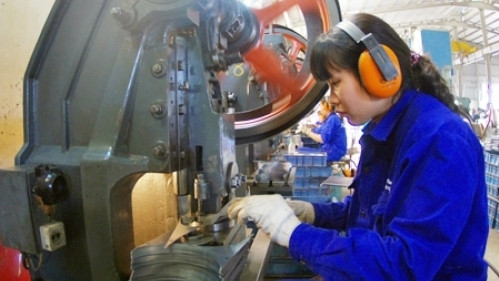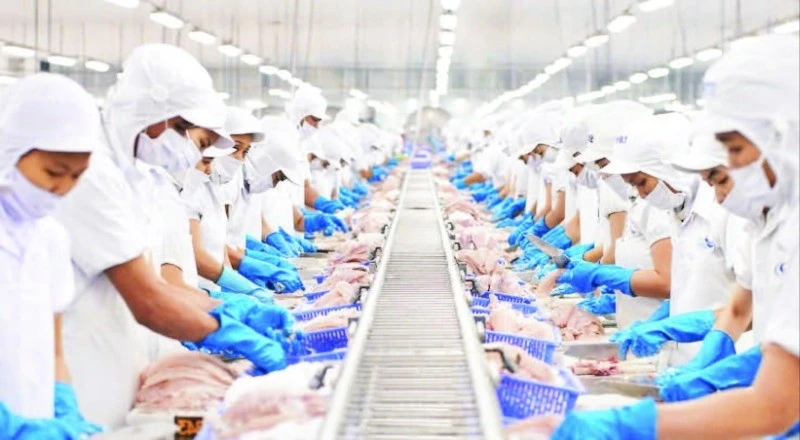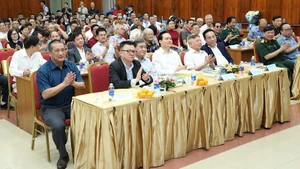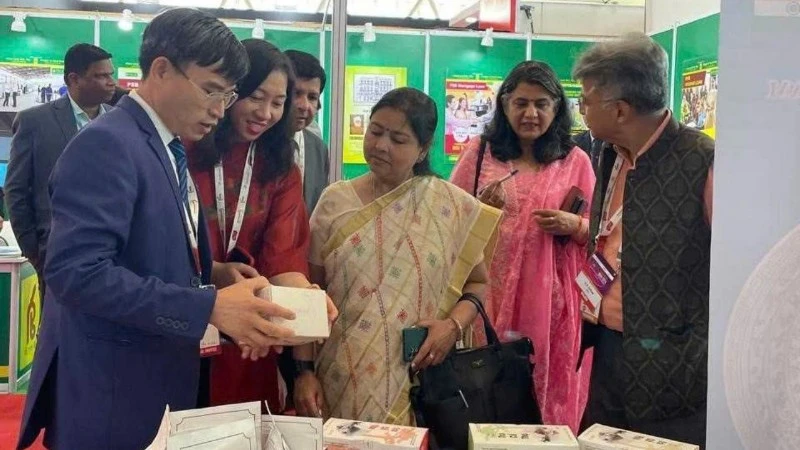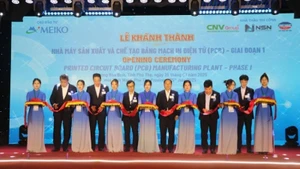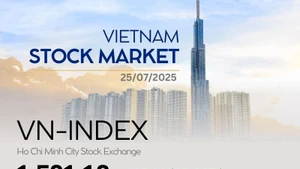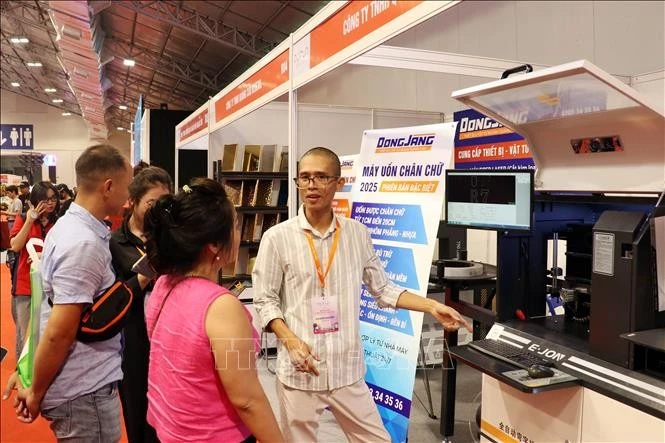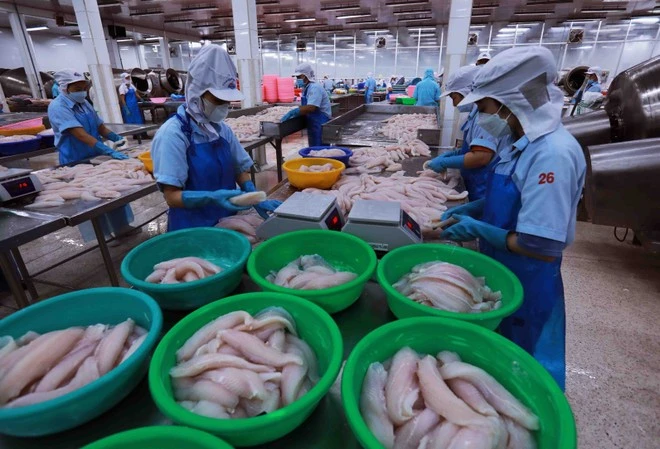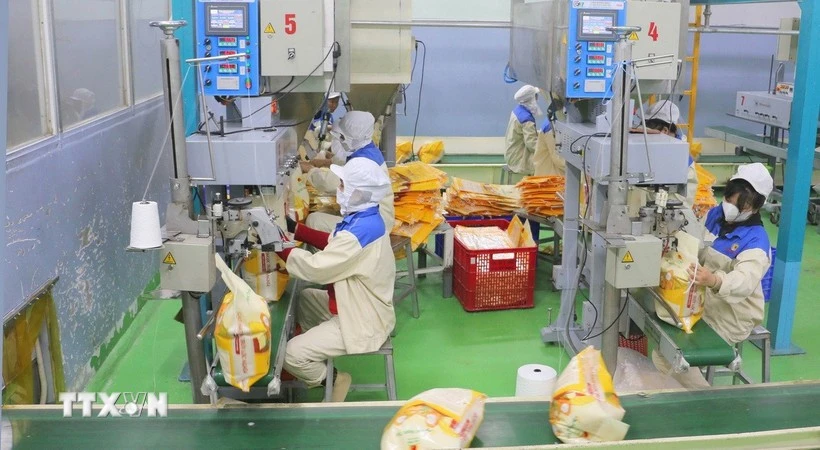Overcoming difficulty
In the early days after taking control of the city from the French, Hanoi’s residents entered a new phase of restoring economic activity. From 1955-1960 marked the establishment of many new factories, the earliest foundation of the manufacturing sector in Hanoi such as Hanoi Mechanical Factory, Tran Hung Dao Mechanics and Gia Lam Mechanics. The first industrial co-operatives of Hanoi as well as of the country were established including Nghia Do Co-operative, O Cach Jute Co-operative and Dan Chu Glassware Co-operative. Hanoi saw the rapid recovery of small and private industrial factories, laying the foundation for a self-controlled industry.
During the first Five-Year Plan (1961-1965), Hanoi’s fledgling industrial sector witnessed many important events. It saw the formation of the first large industrial zones in Thuong Dinh, Minh Khai, Yen Vien and Dong Anh, with tens of thousands of new factories. A range of State-owned enterprises were born out of this period such as Rang Dong Lighting Source and Vacuum Flask Company, Van Dien Phosphate Fertiliser Company, Dong Anh Mechanics and Mai Dong Mechanics. For the first time, Hanoi’s industrial sector was able to manufacture lathes, millers, transformers, diesel engines, car parts, hammering machines, punching machines and small generators. Products of the textile industry, such as sweaters and knitted jackets, began to be exported.
During 1965-1975, when the American war was in its most violent phase, Hanoi’s industrial sector was faced with many difficulties. Factories and industrial facilities had to be relocated to neighbouring provinces, workers had to carry out two duties at the same time: working and fighting. From national unification in 1975 until 1986, Hanoi’s factories were struggling very hard due to old-fashioned economic management mechanisms, reductions in foreign aid, and a serious lack of capital, materials and energy.
Only after the 6th Party National Congress in 1986 did Hanoi’s industrial sector undergo dramatic changes. In the early 1990s, private companies and factories were established and saw rapid development such as Geleximco, Xuan Loc Tho, Hoang Vu and Tung Lam. Many traditional craft villages in Hanoi were restored to help rebuild the rural economy and made a substantial contribution to the city’s export revenue. For the first time, local factories were able to access new technology from developed countries, such as Xuan Hoa Bicycles, Viet Ha Beer and Hanoi Soap. Foreign direct investment (FDI) enterprises began to build factories and Hanoi underwent rapid development. Pioneers of the capital’s industry were joint ventures between Hanoi’s Hanel Company and major Asian companies such as Daewoo Hanel, Orion Hanel and Sumi Hanel in the Sai Dong B Industrial Park in the mid-1990s. In early 2000, the presence of big Japanese corporations such as Yamaha, Canon and Panasonic in the Thang Long Industrial Park drew investment from dozens of enterprises in the auxiliary industry from Taiwan (China) and the Republic of Korea.
Building a modern industry
Over the past 60 years, Hanoi’s industrial sector has seen continuous growth from several dozen State-owned factories and several hundred handicraft co-operatives to nearly 100,000 industrial facilities as of 2013, including 131 State-owned enterprises, 10,700 people-run factories and businesses, and 410 FDI enterprises. In addition, Hanoi has over 1,200 handicraft villages and tens of thousands of craft-making households. The structure of industrial sub-sectors was re-arranged in a more appropriate way, in line with the master plan to form specialised and high-tech industrial zones. International integration allows Hanoi to become a strong magnet for foreign investment and to adopt new technology transferred from advanced economies. In addition to traditional products such as machine tools, transformers, light bulbs, tyres, beer and confectionery, Hanoi’s industrial sector had new key products such as printers, optical parts, computers, motorbikes, food processing lines and granite. The value of exported manufactures now account for 30% of total industrial output, including high value added products such as IT products, machines and electrical equipment. The Hanoi Capital Region appears on the global industrial map as a major manufacturing centre of mobile phones, printers, scanners and motorbikes.
Hanoi’s industrial production now has a large portfolio including thousands of types of products and there has been big changes in both the scale and quality of industrial production. The contingent of Hanoi workers has growing stronger, to more than 700,000. About 60% of industrial enterprise managers have Bachelor degrees or higher. Enterprises have been adopting advanced production management and quality control systems from the US, Europe and Japan to create new breakthroughs in management and administration. Currently there are over 500 enterprises with their respective annual revenue exceeding VND100 billion (US$4.7 million). In the future, the city will focus on developing high-tech industries, so as to transform Hanoi into a high-tech industrial hub of the country, a modern industry based on knowledge, technology and high-quality human resources.
